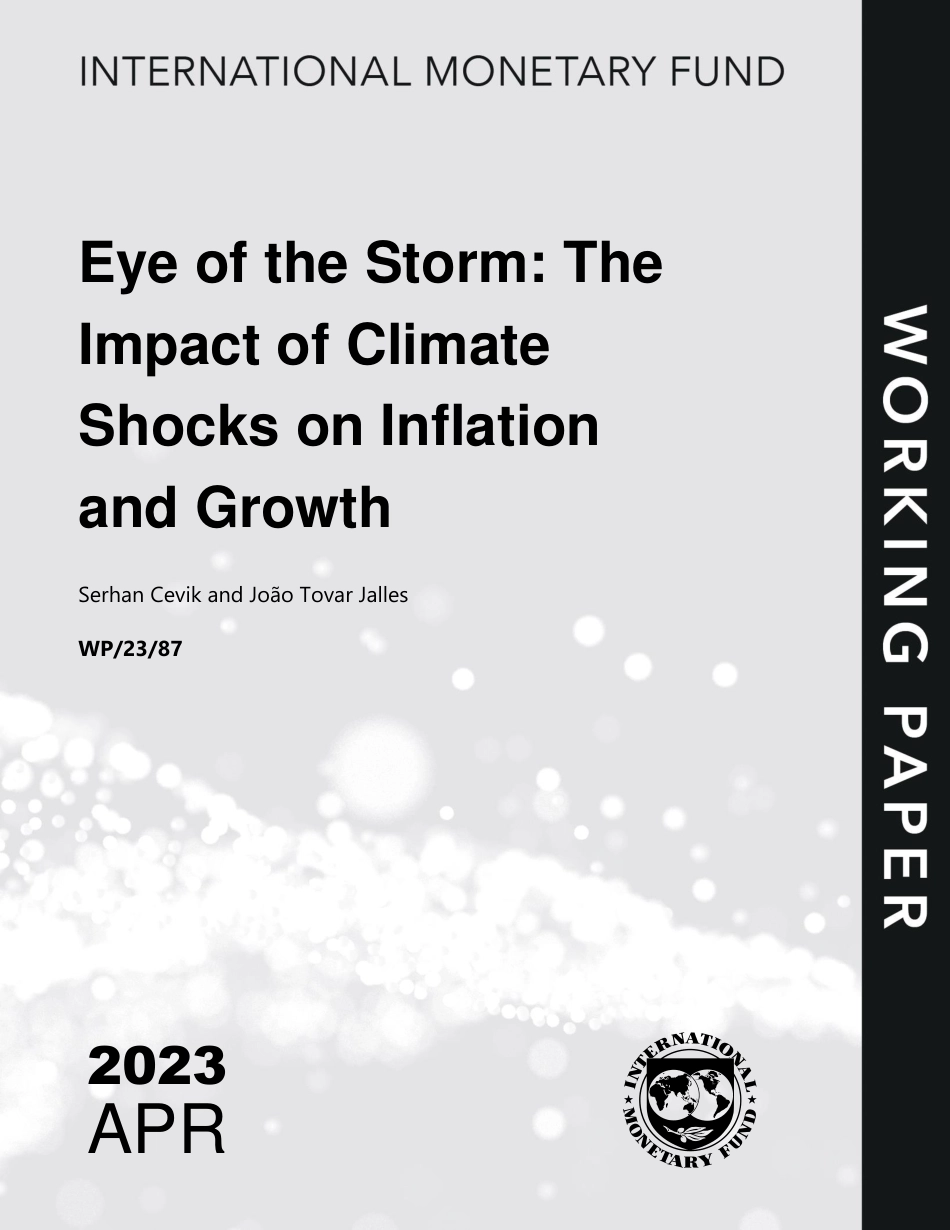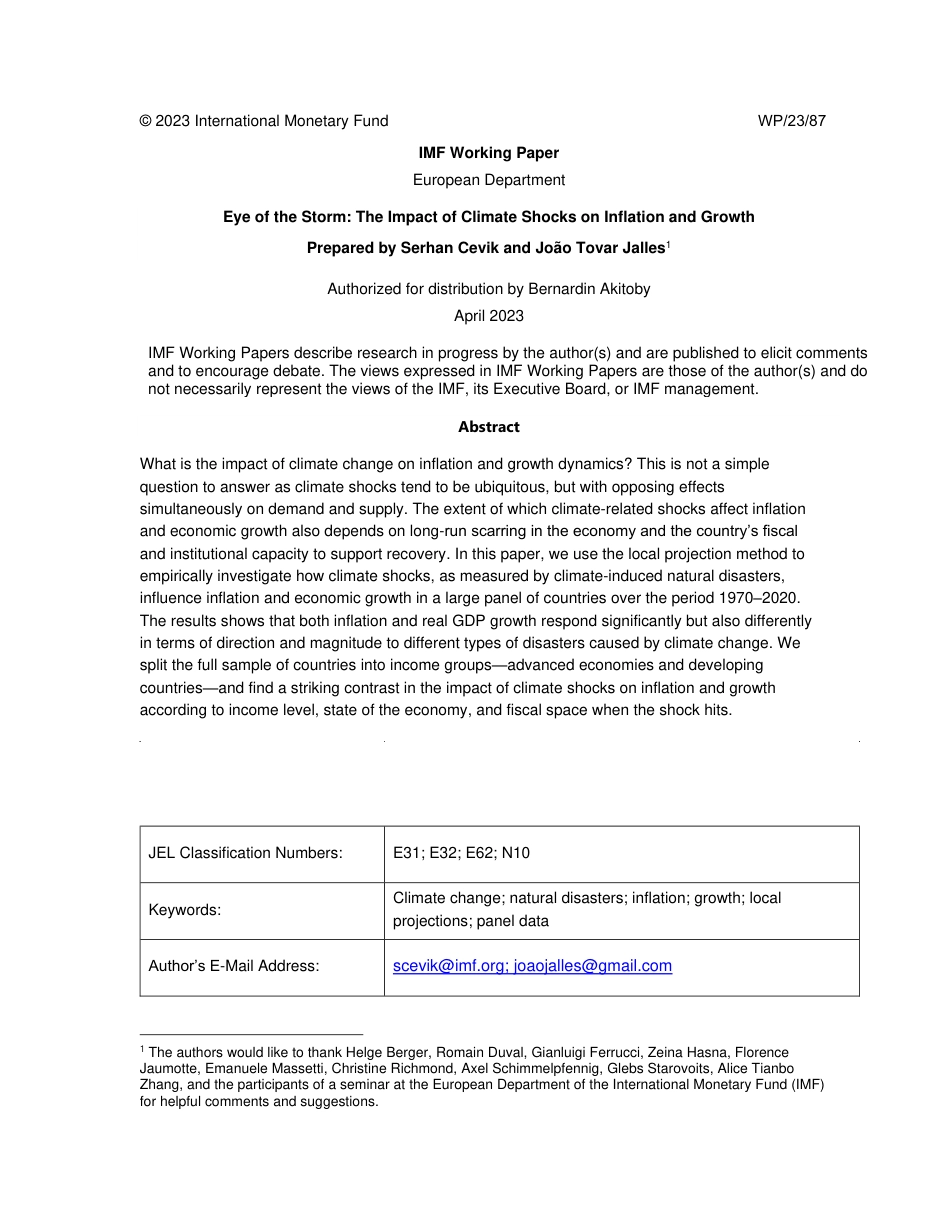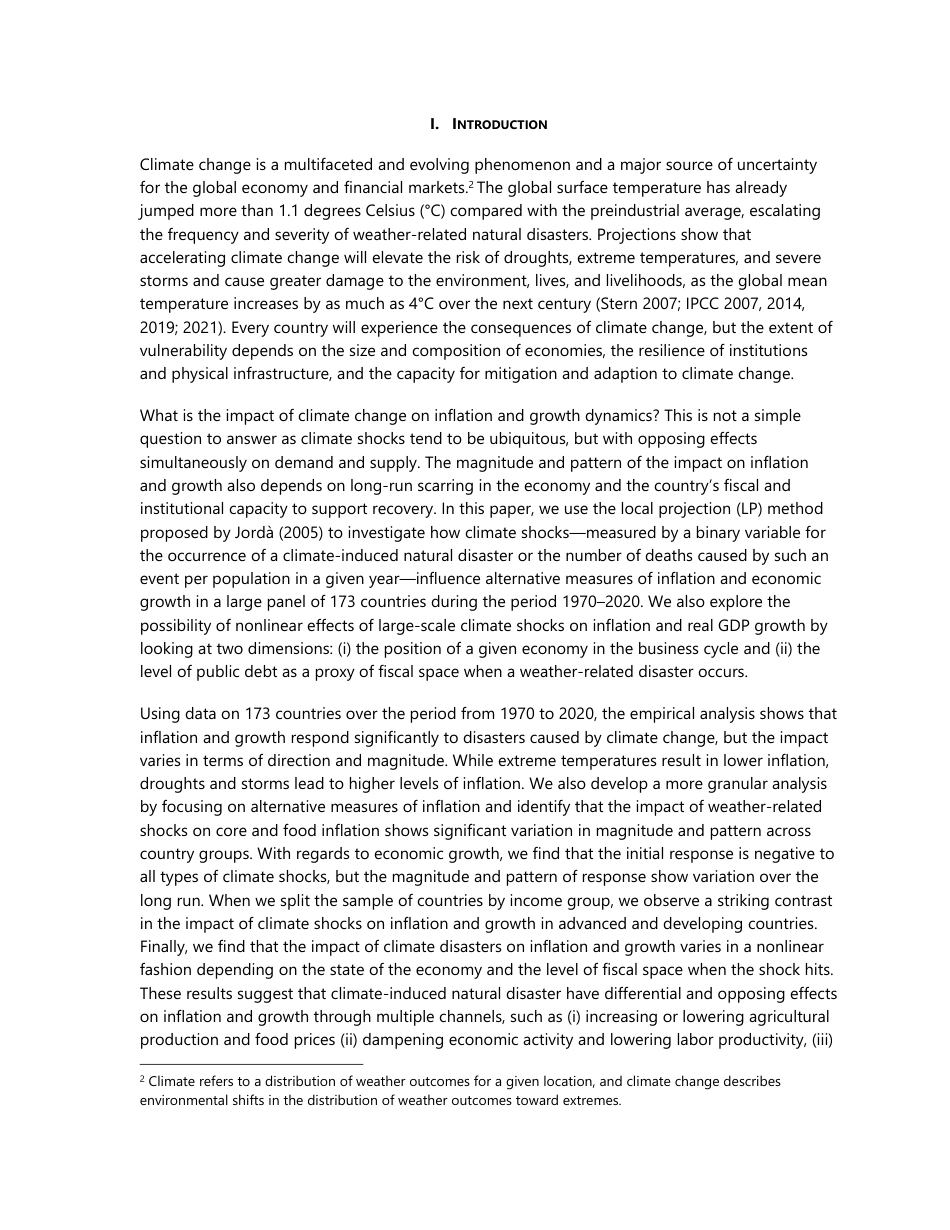2023 APR Eye of the Storm: The Impact of Climate Shocks on Inflation and Growth Serhan Cevik and João Tovar Jalles WP/23/87© 2023 International Monetary Fund WP/23/87IMF Working Paper European Department Eye of the Storm: The Impact of Climate Shocks on Inflation and Growth Prepared by Serhan Cevik and João Tovar Jalles1 Authorized for distribution by Bernardin Akitoby April 2023 IMF Working Papers describe research in progress by the author(s) and are published to elicit comments and to encourage debate. The views expressed in IMF Working Papers are those of the author(s) and do not necessarily represent the views of the IMF, its Executive Board, or IMF management. Abstract What is the impact of climate change on inflation and growth dynamics? This is not a simple question to answer as climate shocks tend to be ubiquitous, but with opposing effects simultaneously on demand and supply. The extent of which climate-related shocks affect inflation and economic growth also depends on long-run scarring in the economy and the country’s fiscal and institutional capacity to support recovery. In this paper, we use the local projection method to empirically investigate how climate shocks, as measured by climate-induced natural disasters, influence inflation and economic growth in a large panel of countries over the period 1970–2020. The results shows that both inflation and real GDP growth respond significantly but also differently in terms of direction and magnitude to different types of disasters caused by climate change. We split the full sample of countries into income groups—advanced economies and developing countries—and find a striking contrast in the impact of climate shocks on inflation and grow...



